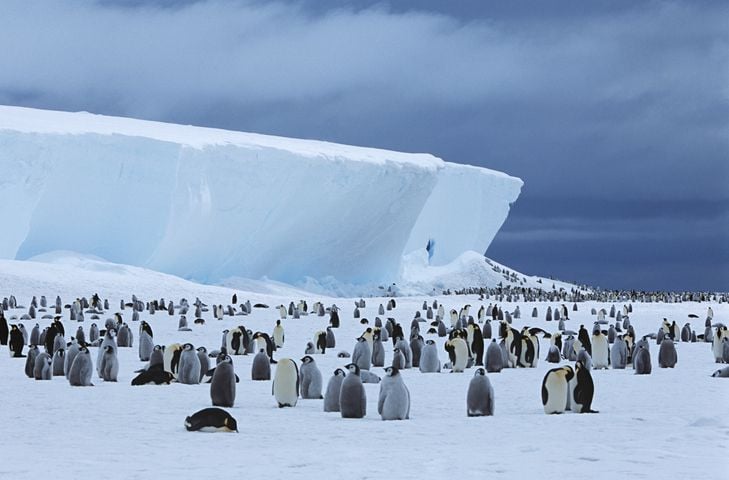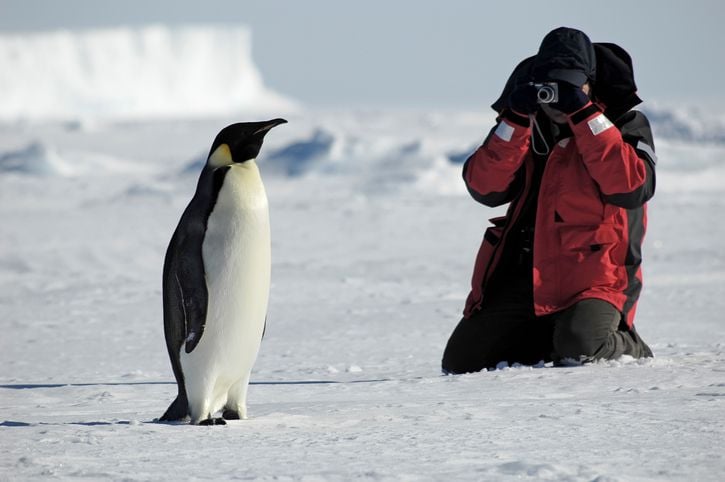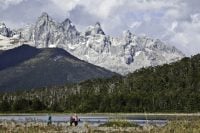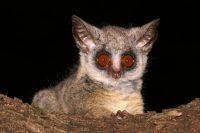It’s no easy task surviving in one of the coldest, harshest climates on earth, so how do the six penguin species that inhabit the Antarctic region withstand these fierce, frigid conditions? The answer is complex but is due to extensive penguin adaptations across the different species that allow them to continue living successfully on this remote, hostile continent.
Penguin adaptations in their feathers
Like all birds, penguins’ bodies are covered in feathers, however, these feathers are significantly different than those found on other species.
Firstly, penguins carry more genes for beta-keratin protein than any other bird on the planet, enabling them to develop a thick plumage of short, stiff feathers. Not only do these feathers help to protect them during Antarctic winters when temperatures drop to as low as -22°F (-30°C), they also keep them warm and waterproof in the water, particularly when swimming in waters as cold as -2.2°C (28°F).
Secondly, it’s a common misconception that penguins remain warm thanks to their high density of feathers. Instead, the combination of different types of feathers it what is most effective at protecting them from the freezing cold.
 For example, penguins have adapted a range of feather types. These include the main quill-like feathers called contour feathers that cover their bodies, as well as two types of insulative feathers: plumules (downy feathers attached directly to the skin) and afterfeathers (downy plumes attached to the main feathers). Combined, these feathers provide a complex, overlapping network of insulation – an essential feature of penguin adaptations for the harsh Antarctic climate.
For example, penguins have adapted a range of feather types. These include the main quill-like feathers called contour feathers that cover their bodies, as well as two types of insulative feathers: plumules (downy feathers attached directly to the skin) and afterfeathers (downy plumes attached to the main feathers). Combined, these feathers provide a complex, overlapping network of insulation – an essential feature of penguin adaptations for the harsh Antarctic climate.
Finally, penguins’ feathers have adapted to store air – something that serves two purposes. This air can be released when they are underwater to prevent drag and to allow them to be streamlined and faster when swimming. It also enables them to quickly shed water when back on land.
Penguin adaptations in their skin
Penguins’ skin is another example of how these birds have adapted to the cold Antarctic climate. They have been found to carry the DSG1 gene, which in humans is linked to very thick skin on palms and feet. This means that penguins have developed far thicker skin than other birds, allowing them to withstand freezing temperatures.
Additionally, like all marine animals that inhabit Antarctica, they have a thick layer of insulating blubber under their skin that acts as a barrier to the cold.
Penguin adaptations in their feet
You may have wondered how it is that penguins’ feet, despite being in direct contact with the ice, don’t freeze. The science behind this allows us to understand another important way that penguins have adapted to life in Antarctica.
 Firstly, their bodies can control the amount of blood flow that reaches their feet by varying the diameter of arterial vessels. In cold weather, this can be reduced, in hot weather, it can be increased.
Firstly, their bodies can control the amount of blood flow that reaches their feet by varying the diameter of arterial vessels. In cold weather, this can be reduced, in hot weather, it can be increased.
Secondly, they have ‘countercurrent heat exchangers’ at the top of their legs. The arteries that lead towards the feet contain warm blood and as the arteries break into smaller vessels, they pass closely by the venous vessels that are bringing cold blood back from the feet. This allows heat to move between the two and so stops penguin’s feet from getting lower than 33.8 F (1°C)afreezing.
Emperor penguin adaptations
As the only animal that breeds in the Antarctic winter, emperor penguins have been forced to adapt to even more extreme conditions than most other species of penguin. A key adaptation to the climate is the fact that they have only a few extremities, such as very small bills and flippers, which mean that less heat is lost by blood coming into contact with the cold air.
But perhaps the best known of their adaptations is their social behavior which sees them huddling together in groups of thousands as a way of protecting themselves from the cold. These huddles are characterized by constant movement, as those on the outskirts of the group do not receive the same wind protection as those on the inside.
As a result, emperor penguins huddles can prevent heat loss by up to an incredible 50%.
No comments yet
There are no comments on this post yet.






Leave a comment